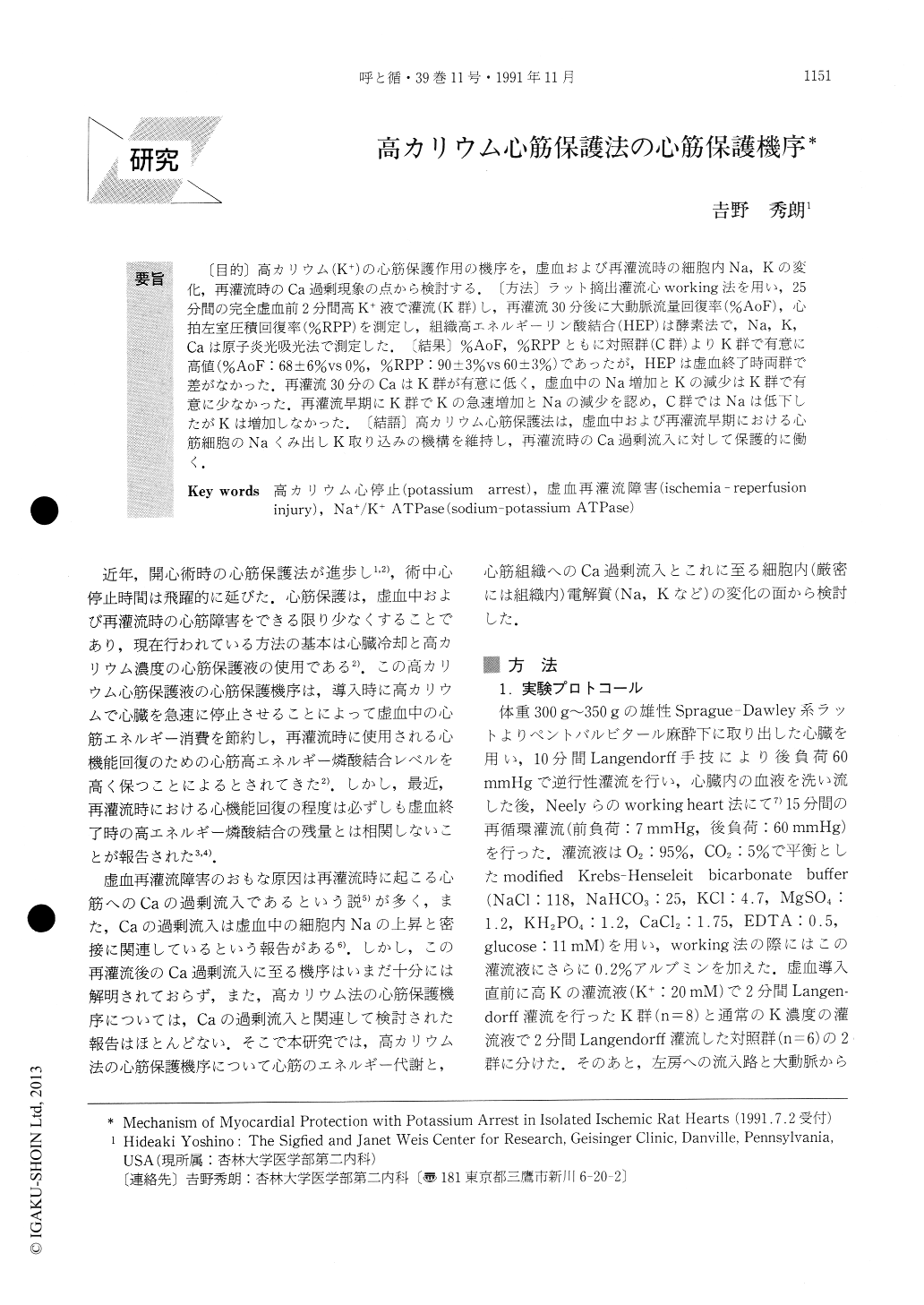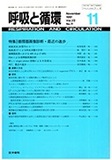Japanese
English
- 有料閲覧
- Abstract 文献概要
- 1ページ目 Look Inside
〔目的〕高カリウム(K+)の心筋保護作用の機序を,虚血および再灌流時の細胞内Na,Kの変化,再灌流時のCa過剰現象の点から検討する.〔方法〕ラット摘出灌流心working法を用い,25分間の完全虚血前2分間高K+液で灌流(K群)し,再灌流30分後に大動脈流量回復率(%AoF),心拍左室圧積回復率(%RPP)を測定し,組織高エネルギーリン酸結合(HEP)は酵素法で,Na,K,Caは原子炎光吸光法で測定した.〔結果〕%AoF,%RPPともに対照群(C群)よりK群で有意に高値(%AoF:68±6%vs0%,%RPP:90±3%vs60±3%)であったが,HEPは虚血終了時両群で差がなかった.再灌流30分のCaはK群が有意に低く,虚血中のNa増加とKの減少はK群で有意に少なかった.再灌流早期にK群でKの急速増加とNaの減少を認め,C群ではNaは低下したがKは増加しなかった.〔結語〕高カリウム心筋保護法は,虚血中および再灌流早期における心筋細胞のNaくみ出しK取り込みの機構を維持し,再灌流時のCa過剰流入に対して保護的に働く.
Isolated working rat hearts were exposed to 25 min ischemia, and functional recovery was assessed by aortic flow (AoF) and rate-pressure product (RPP) to evaluate the beneficial effects of potassium (20 mM) induced arrest (K-arrest) prior to ischemia. K-arrest improved the recovery of function after 30min of reper-fusion compared with the control group (%AoF: 68±6 vs 0%, %RPP: 90±3% vs 60±3%, p<0.01). The accu-mulation of Ca++ at the end of reperfusion was less in hearts with K-arrest (2.2±0.1 vs 4.5±0.3μmol/g dry, p<0.01). There was no difference between the two groups in high energy phosphate content at the end of ischemia.

Copyright © 1991, Igaku-Shoin Ltd. All rights reserved.


